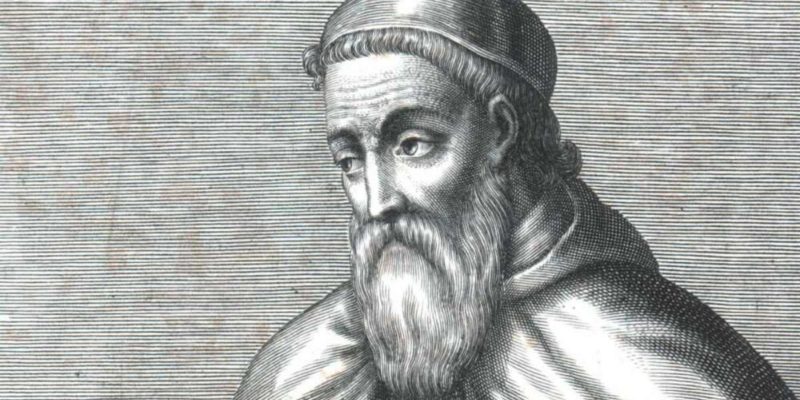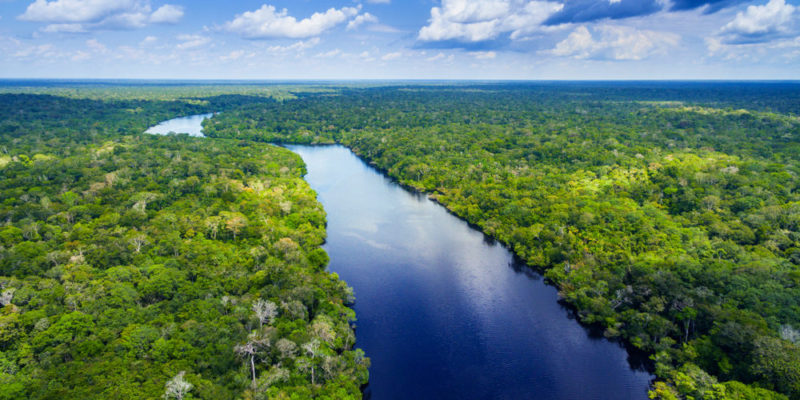We explain what America is and its physical and cultural characteristics. Also, how is its economy, religion and the history of this continent.
The American continent is sometimes called the New World , as opposed to the European continent , since America was initially populated by ancient cultures from East Asia that evolved completely independently from the rest of the world for millennia, until in October 1492 the Ships of the Genoese navigator Christopher Columbus found its coasts and the so-called "Encounter of two worlds" began.
As a result of this history, America has been the home of a very particular culture with two of the cradles of human civilization (the Inca and the Mesoamerican ), which after centuries of colonization and syncretism today result in a diverse continent , home to both of one of the warlike and industrial powers of the contemporary world (the United States), and of the vast and complex Latin American culture .
Name America
 The name "America" dates back to 1538 and comes from the name of Americo Vespucci, a Florentine navigator who would have been the first to suggest that all that land mass was a completely new continent and not an unknown portion of Asia, as the Spanish thought. , Portuguese and English who explored it.
The name "America" dates back to 1538 and comes from the name of Americo Vespucci, a Florentine navigator who would have been the first to suggest that all that land mass was a completely new continent and not an unknown portion of Asia, as the Spanish thought. , Portuguese and English who explored it.For centuries it was known as the Castilian Kingdoms of the Indies or West Indies ( West Indies , in English), since the continent was discovered in an attempt to find new routes to China and India , putting the idea of the world to the test. round.
Contrary to what is being promoted at the same time from American communications, America is the name of the entire continent and not only of that nation, so that all the inhabitants of the various latitudes it comprises will all be Americans.
Boundaries and surface of America
 The American continent has an area of 43,316,000 km2 , from the frozen deserts of Alaska to southern Patagonia, which represents 8.4% of the total planetary surface and 30.2% of the absolute continental surface. Its territory borders the Arctic Ocean to the north, the Atlantic Ocean to the east, the Pacific Ocean to the west and Antarctica to the south .
The American continent has an area of 43,316,000 km2 , from the frozen deserts of Alaska to southern Patagonia, which represents 8.4% of the total planetary surface and 30.2% of the absolute continental surface. Its territory borders the Arctic Ocean to the north, the Atlantic Ocean to the east, the Pacific Ocean to the west and Antarctica to the south .
Physical characteristics of America
 America is made up of three subcontinents : South America , Central America , and North America , as well as a set of islands known as the Antilles.
America is made up of three subcontinents : South America , Central America , and North America , as well as a set of islands known as the Antilles.These four regions are highly varied climatically and topographically , with large mountain ranges such as the Rocky Mountains, the Sierra Madre Occidental, and the Andes , as well as important island assemblages such as the West Indies, the Canadian Arctic, Greenland, the Galapagos Islands, and the Falkland Islands. Also extensive plains in North America and in the South American Patagonian region.
There are large concentrations of plants, such as the South American Amazon , the Central American jungles or the great North American temperate forests .
It may interest you: Relief of America .
Political characteristics of America
 The continent is divided into 35 countries , of which the vast majority are former European colonies, and 23 dependencies of European states such as Denmark, the United Kingdom , France and the Netherlands.
The continent is divided into 35 countries , of which the vast majority are former European colonies, and 23 dependencies of European states such as Denmark, the United Kingdom , France and the Netherlands.The sovereign states of the continent have full representation in the United Nations (UN) and the majority diplomatically integrate the Organization of American States (OAS). There are other regional integration blocs such as UNASUR, Mercosur, CELAC, ALBA-TPC, NAFTA and the Organization of Central American States.
The 35 American countries are:
- In South America. Argentina , Bolivia , Brazil , Chile , Colombia, Ecuador , Guyana, Paraguay , Peru , Uruguay , Venezuela .
- In central America. Costa Rica, El Salvador, Guatemala , Honduras, Nicaragua , Panama.
- In the Antilles. Antigua and Barbuda, Bahamas, Barbados, Cuba, Dominica, Dominican Republic, Haiti, Jamaica, Grenada, Saint Kitts and Nevis, Saint Vincent and the Grenadines, Saint Lucia, Trinidad and Tobago.
- In North America. Belize, Canada, United States, Mexico .
Cultural characteristics of America
 Culturally, the American continent is divided into two large regions:
Culturally, the American continent is divided into two large regions:
- Anglo-Saxon America . Located to the north and with a presence in European dependencies and certain Antillean nations, it is an English and French-speaking America, predominantly Protestant, whose main exponents are Canada and the United States. It is the most industrialized region with the highest human development index.
- Latin America . Located in the rest of the continent, including the center, south and Antilles, it is one of the richest and most culturally diverse regions on the planet, given the direction that the miscegenation between the Iberian colonial culture (Spanish and Portuguese), the African and the Pre-Columbian took on each particular country, throwing up a complex mosaic that was often dubbed "the melting pot of races."
American population
 America has about 1,041,034,000 inhabitants , with an average density of 23.6 inhabitants per km2: it is the third most populated continent in the world and one of the least densely inhabited. The most populated cities on the continent are Mexico City , New York, Sao Paolo, Los Angeles, Buenos Aires , Rio de Janeiro, Chicago, Lima, Bogotá and Washington DF
America has about 1,041,034,000 inhabitants , with an average density of 23.6 inhabitants per km2: it is the third most populated continent in the world and one of the least densely inhabited. The most populated cities on the continent are Mexico City , New York, Sao Paolo, Los Angeles, Buenos Aires , Rio de Janeiro, Chicago, Lima, Bogotá and Washington DFThe American population is highly varied in terms of race , since in most of the continent an extremely rich and complex process of racial hybridization and miscegenation took place, starting with the arrival of European settlers and the introduction of slaves. African blacks.
Languages of America
The main languages of the continent are Spanish, English, French and Portuguese , but alongside them there is a veritable multitude of dialects, aboriginal languages and lingua francas , ranging from Nahuatl, Aymara, Quechua, Guaraní, Papiamento, Otomí, Creole, etc.
Religions of America
 The majority religions in America are Christian: Catholic and Protestant , implanted by centuries of colonial domination at the hands of Europe.
The majority religions in America are Christian: Catholic and Protestant , implanted by centuries of colonial domination at the hands of Europe.However, pre-Columbian cults and aboriginal deities survive , in many cases fused with Catholic rites, and even the Yoruba religion has an important presence in the Caribbean region, preserving much of its African heritage.
It can serve you: Christianity .
America's economy
 In America there are some of the most industrialized countries in the world and their robust economies accompany their currencies and markets internationally, such as the United States, Canada, Brazil or Mexico.
In America there are some of the most industrialized countries in the world and their robust economies accompany their currencies and markets internationally, such as the United States, Canada, Brazil or Mexico.At the same time, most of the Latin American nations present alarming indices of inequality in their population , with important margins of poverty such as the Brazilian favelas or the rural Bolivian, Mexican and Central American populations.
History of america
The history of the continent is vast and complex, but it can be divided into the following periods:
- Pre-Columbian. With millenary presence of great aboriginal cultures such as the Inca and Mesoamerican, whose archaeological remains still persist and which were swept away by the arrival of European settlers during the bloody wars of American conquest , starting in the 15th century.
- Colonial . The European colony in America, especially in Latin America, was a period of three centuries in which anextractivist society was formedruled from the European metropolis, to which a contingent of African slaves was also incorporated to cultivate the land. This period culminated in the successive American independence wars between the 18th and 19th centuries, which resulted in a set ofmore or less stable republics .
- Republican. Between the nineteenth century and today, the American republics have tried to find the best way to manage themselves and overcome the challenges inherited from the colony, such as racial, social and cultural inequality; the dependent economy (through the sale of raw materials ) and late and unsuccessful industrialization .
The above content published at Collaborative Research Group is for informational and educational purposes only and has been developed by referring reliable sources and recommendations from technology experts. We do not have any contact with official entities nor do we intend to replace the information that they emit.
Abubakr Conner brings a diverse skill set to our team, and covers everything from analysis to the culture of food and drink. He Believes: "Education is the most powerful weapon that exists to change the world." .
Leave a reply
Your email address will not be published. Required fields are marked *Recent post

Sport: What Is It, Types, Risks, Features, Characteristics and Examples
September 23, 2021

Dogs: Emergence, Features, Characteristics, Feeding and Breeds
September 24, 2021

Story: Definition, Elements, Structure, Features and Characteristics
September 24, 2021

Essay: Definition, Structure, Features, Characteristics, How to Do It
September 24, 2021
